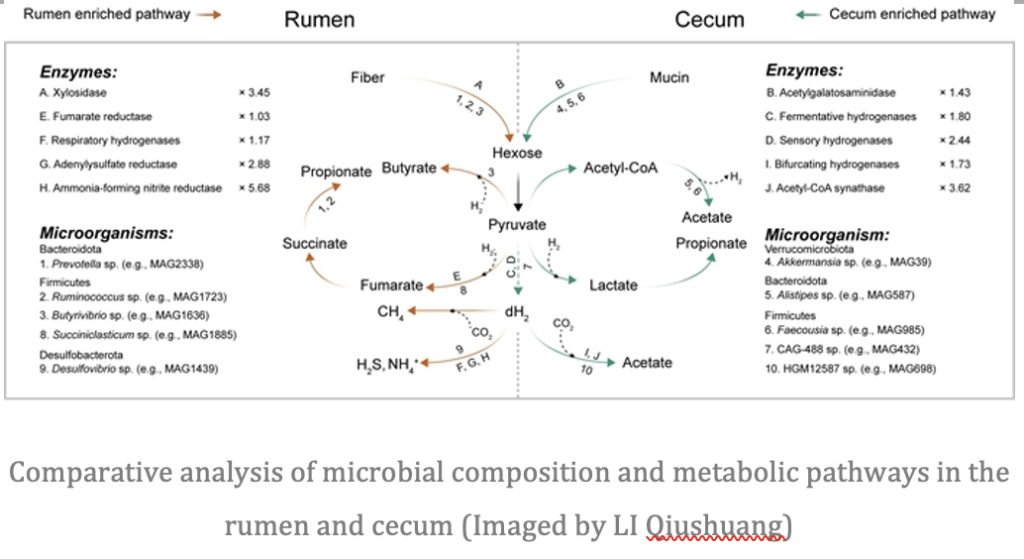http://english.cas.cn/newsroom/research_news/life/202502/t20250211_901264.shtml
https://microbiomejournal.biomedcentral.com/articles/10.1186/s40168-024-02018-1
A research team led by Prof. TAN Zhiliang from the CAS Institute of Subtropical Agriculture has uncovered the microbial mechanisms responsible for the low methane emission trait in the hindgut of ruminants.
Ruminants, a cornerstone of animal husbandry and among the earliest domesticated livestock, possess a unique digestive system reliant on microbial fermentation to break down plant-based feed into volatile fatty acids—their primary energy source. However, methane, a potent greenhouse gas, is a byproduct of this fermentation, particularly in the rumen. Over 90% of methane emissions in ruminants occur in the rumen, while the hindgut, especially the cecum, is known for its low methane production, though its microbial processes remain largely unexplored.
In this study, the researchers compared microbial composition, metabolic functions, and activity between the rumen and cecum. They found that the rumen is dominated by fiber-degrading microbes such as Prevotella, Ruminococcus, and Butyrivibrio, enhancing cellulose breakdown and propionate production while promoting methanogen proliferation and methane generation. Low dissolved hydrogen concentrations in the rumen were attributed to hydrogen consumption by hydrogenotrophic methanogens, fumarate-reducing bacteria (Succinivibrionaceae), and nitrate-reducing bacteria (Desulfovibrio).
By contrast, the cecum harbored mucin-degrading bacteria such as Akkermansia, Alistipes, and Faecalibacterium, which boosted host-derived carbohydrate utilization and acetate synthesis. Notably, the cecum exhibited a unique enrichment of hydrogen-producing fermentative bacteria and a novel lineage of formate-dependent acetogens (HGM1287).
Comparative genomic analysis revealed distinct phylogenetic and functional differences between cecal and ruminal acetogens. Cross-species comparisons further confirmed that acetogenesis is a critical metabolic process in the hindgut of ruminants, serving as a key microbial driver for low methane emissions and efficient hydrogen utilization in the cecum.
The study elucidates how reductive acetogenesis dominates hindgut microbial metabolism, offering a scientific foundation for developing strategies to mitigate methane emissions in ruminant livestock.

